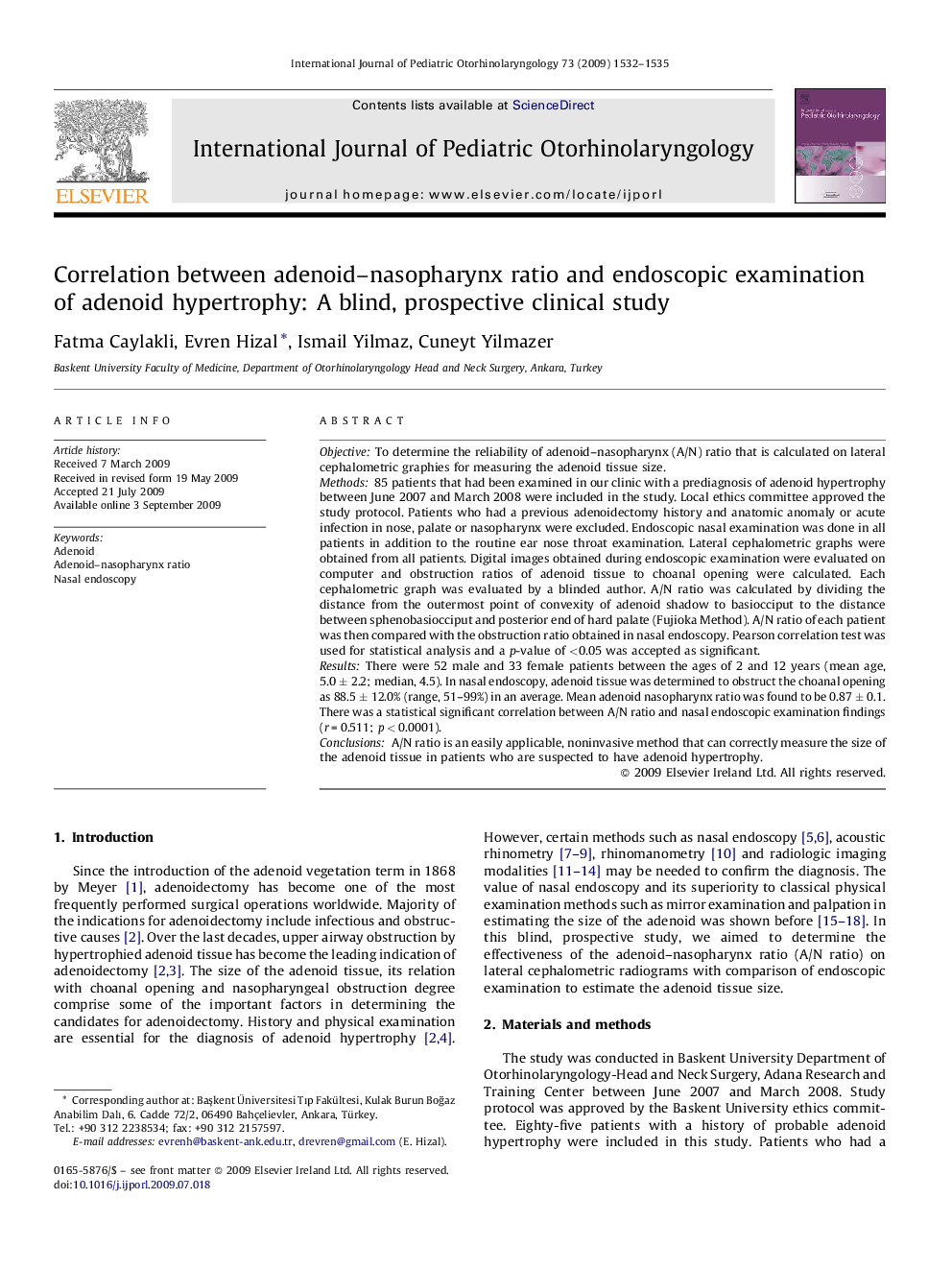| Article ID | Journal | Published Year | Pages | File Type |
|---|---|---|---|---|
| 4114987 | International Journal of Pediatric Otorhinolaryngology | 2009 | 4 Pages |
ObjectiveTo determine the reliability of adenoid–nasopharynx (A/N) ratio that is calculated on lateral cephalometric graphies for measuring the adenoid tissue size.Methods85 patients that had been examined in our clinic with a prediagnosis of adenoid hypertrophy between June 2007 and March 2008 were included in the study. Local ethics committee approved the study protocol. Patients who had a previous adenoidectomy history and anatomic anomaly or acute infection in nose, palate or nasopharynx were excluded. Endoscopic nasal examination was done in all patients in addition to the routine ear nose throat examination. Lateral cephalometric graphs were obtained from all patients. Digital images obtained during endoscopic examination were evaluated on computer and obstruction ratios of adenoid tissue to choanal opening were calculated. Each cephalometric graph was evaluated by a blinded author. A/N ratio was calculated by dividing the distance from the outermost point of convexity of adenoid shadow to basiocciput to the distance between sphenobasiocciput and posterior end of hard palate (Fujioka Method). A/N ratio of each patient was then compared with the obstruction ratio obtained in nasal endoscopy. Pearson correlation test was used for statistical analysis and a p-value of <0.05 was accepted as significant.ResultsThere were 52 male and 33 female patients between the ages of 2 and 12 years (mean age, 5.0 ± 2.2; median, 4.5). In nasal endoscopy, adenoid tissue was determined to obstruct the choanal opening as 88.5 ± 12.0% (range, 51–99%) in an average. Mean adenoid nasopharynx ratio was found to be 0.87 ± 0.1. There was a statistical significant correlation between A/N ratio and nasal endoscopic examination findings (r = 0.511; p < 0.0001).ConclusionsA/N ratio is an easily applicable, noninvasive method that can correctly measure the size of the adenoid tissue in patients who are suspected to have adenoid hypertrophy.
